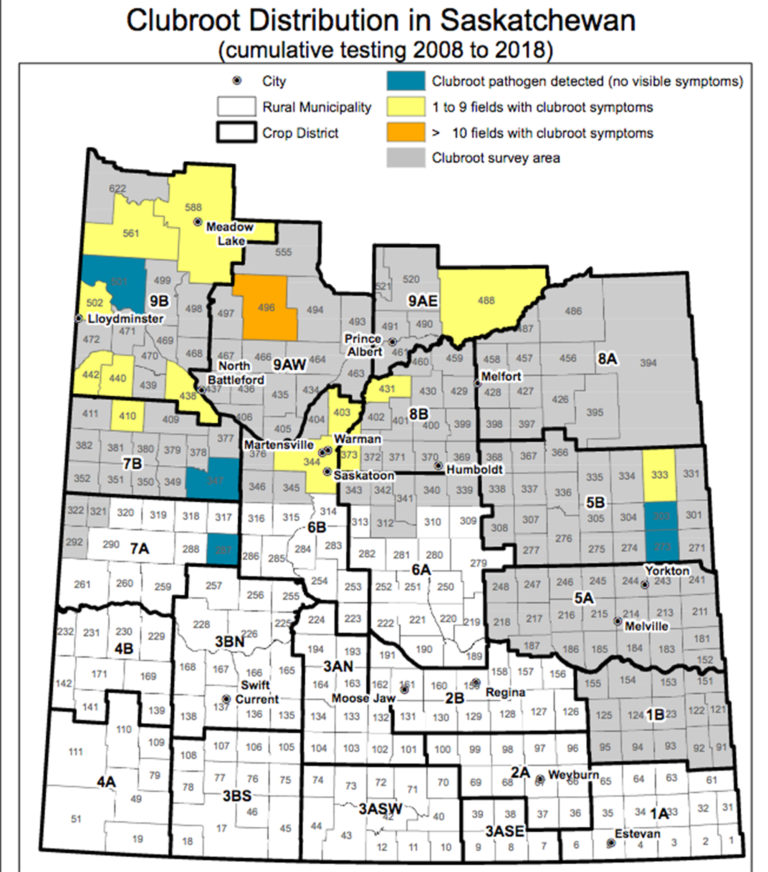
It’s not a major problem yet, but the provincial government wants to keep it from turning into one.
The “it” is clubroot, a crop disease that restricts the ability of canola plants to draw water and nutrients from the soil. Although the disease was relatively unknown in Saskatchewan until roughly a decade ago, farmers are starting to find more and more traces of it in their fields.
With that in mind, the provincial government released their Clubroot Map on Thursday to help producers monitor and fight the disease. The map numbers are based on a 2017 survey, which found disease symptoms or pathogens in 43 commercial fields since 2008.
“The distribution and the number of clubroot infested fields is higher than what we previously thought, but the good news behind it is the number is still quite low,” provincial plant disease specialist Barbara Ziesman said. “From an overall perspective, that does give us an indication that we still have the potential to be proactive and minimize the impact of clubroot on the canola industry.”
Neither the rural municipalities of Prince Albert or Buckland had any traces of clubroot, but other RMs weren’t so lucky. The Rural Municipality of Spiritwood, located west of Prince Albert, had the highest number of affected fields, with more than 10 of them showing at least one symptom.
Another 13 RMs had at least one field showing symptoms, the closest to Prince Albert being the RM of Torch River and RM of St. Louis. The clubroot pathogen was detected in fields in an additional five rural municipalities, but there were no visible symptoms.
Ideally, Ziesman says the clubroot map will help producers be aware of conditions their area so they can take the necessary precautions.
“The biggest thing is awareness,” she said. “We do encourage all producers to monitor their fields for clubroot. Just because it hasn’t been detected yet in your RM doesn’t mean it’s not there.”
Ziesman added that farmers should use resistant canola varieties and look at extending crop rotation periods to help minimize the disease’s impact. Extended rotation periods will help keep the pathogen level low, she explained, and help minimize potential yield losses.
Long-term, the outlook is good for Saskatchewan, although Ziesman said farmers still need to be cautious.
“I think if we see an uptake in pro-active management strategies by producers, then we do have that opportunity to minimize the impact,” she said. “Even if we do see the pathogen is present in a number of fields, with those proactive management strategies enacted we’re not going to see that large economic impact.”
In extreme cases, clubroot can wipe out close to an entire field of canola. The pathogen was first detected in Saskatchewan in 2008. The first clubroot symptoms were discovered in 2011 and confirmed in 2017.
Clubroot is a regulated pest under The Pest Control Act, which means rural municipalities have the authority to undertake prevention and enforcement measures limiting the spread of the disease. The provincial government does not have authority under The Pest Control Act, and is instead limited to monitoring the location and severity of the disease.
